History
Text contributed by Jay Haviser; Director of Sint Maarten Archaeological Center (SIMARC):
With the Indigenous name of St. Maarten identified by the Carib as ‘Soualiga’ meaning ‘land of salt’, it is probable that the Great Pond natural lagoon salt areas were important even in prehistoric times. It is certain that salt was of great importance to the Europeans, and indeed was one of the key reasons for their first settlement of the island in the 17th century. By 1850 salt production on St. Maarten had reached 337,000 barrels per year, with the primary laborers in the salt industry being persons of African descent.
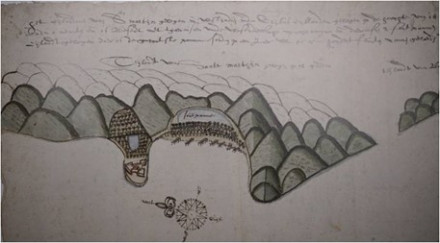
Salt was the original attraction of Sint Maarten for the Dutch, here indicated on one of the earliest maps of the island in 1630, and (below) more developed by the time of this map in 1916.
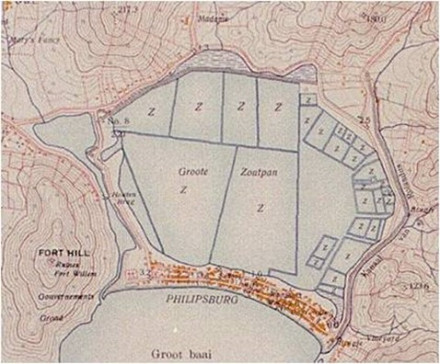
The Great Salt Pond Saltpans are iconic heritage symbol for the island, and also represent the hard labor of the African-descendent folk on Sint Maarten.
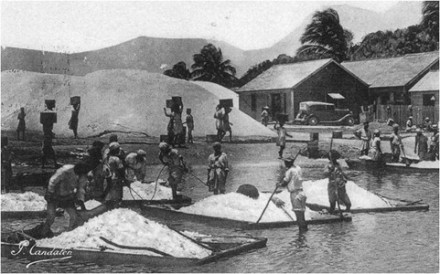
Description
This very large archaeological site area consists of dry-pile stone walls which are built in geometric patterns to create holding areas, called ‘salt pans’, in which the salt water was evaporated then the salt removed. The main historical salt pans encompass the entire eastern side of the Great Salt Pond.
Two unique archaeological features within the Great Pond Saltpans complex, are a Dutch-style wind-pump from the 19th century, which was used to pump freshwater from the saltpans, and was later lost in the mid-20th century. A second important feature within the Great Salt Pond complex, is an industrial steam-powered facility built in the 1870s to pump freshwater, and crush the salt.
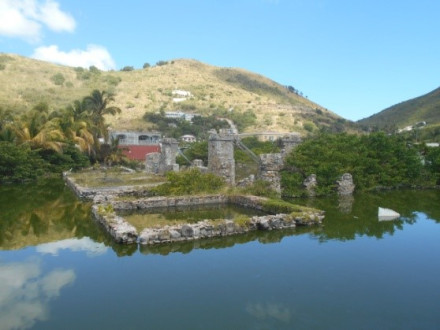
Foga steam-powered pumping-station (above), and the (below) Dutch-style wind-pump, both built for the saltpans industry at the Great Salt Pond.
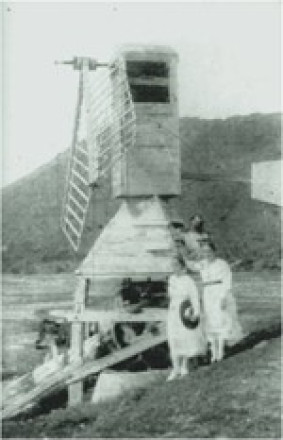
Great Salt Pond Saltpans as they were in the 1960s, filled with salt (below).

Great Salt Pond Saltpans as they are today (below).
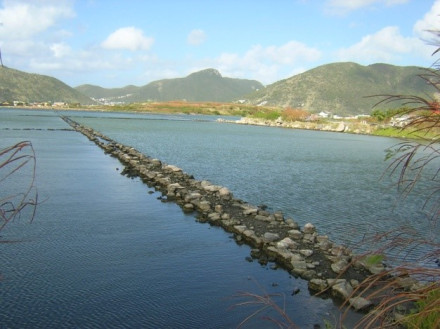
Status
The Great Salt Pond Saltpans were commercially exploited from the early 17th century until the 1940’s on Dutch-side St. Maarten. This eastern portion of this site was designated on the St. Maarten Monuments List in 2008, which provides some degree of protection.